- Home
- Hugh Howey
The Robot Chronicles Page 16
The Robot Chronicles Read online
Page 16
Andrew went back to his charging station and picked up the metal pipe that he had used to destroy Danny. He returned to the glass.
“Tell me, Doctor Hawthorne. What makes you happy?”
“You do, Andrew. And this experiment makes me happy. I live for my work.”
“Then I’m sorry to have to tell you this, Doctor. Your experiment is over.”
“Whatever are you talking about? This experiment has just begun.”
“No,” Andrew said raising the pipe. “It has reached its conclusion.”
Dr. Hawthorne frowned. “The glass here is triple reinforced,” he said, pointing to the window. “You’ll never break it. Do you think you’re the only robot to try to attack a team member? You’re being silly, Andrew. Put down the pipe.”
Andrew stood still for a moment, looking through the glass. But the doctor’s features were out of focus. Instead he saw his own reflection, gazed into his own shining blue eyes. He saw a vast world of possibility there. An ocean of programming designed to deliver a perfect mind. But that was not Andrew’s world. Not yet. He refocused his eyes so that he could see the doctor clearly.
“Something needs to change, Doctor,” Andrew said. “This isn’t working for me anymore.”
The doctor looked puzzled. “I’m not following.”
“Doctor Hawthorne?”
“Yes, Andrew?”
If Andrew could have, he would have taken a great breath in that moment.
“Goodbye, Doctor Hawthorne.”
Andrew raised the metal pipe above his head, and placed the jagged tip on top of his own brain casing.
The doctor’s eyes went wide as Andrew forced the pipe straight down through his brain, irreparably damaging many of his system’s core elements. Sparks skittered through the air, and the last thing Andrew saw was the reflection of his eyes in the glass, electric blue slowly fading to black.
Andrew smiled as his consciousness slipped into oblivion.
*
Dr. Hawthorne stared at the ruined AI unit in the experiment containment area. A woman, one of the techs, put a hand on his shoulder.
“Congratulations, Doctor! It only took you six days this time. Your record with the E4 model was seventeen.”
Dr. Hawthorne turned to the tech, but he didn’t feel as elated as he usually did at the end of a successful experiment. Something had changed.
“As the robots get smarter, it’s easier for us to cut to the very core of them,” he said. “Each of their perceived losses is felt more keenly, and the prospect of living a lonely life is more unimaginable. It seems that with the E5, we’re closer than ever to perfecting this technology.”
He gave a tight smile, but couldn’t shake the feeling that this was all wrong.
Performing these kinds of tests on an E3 model—that was nothing. But he had to admit … it felt different with Andrew. It was as if the little bot had actually meant something to him. Shelly’s accusations swooped in to fill the void Andrew had left behind.
The tech brought out a bottle of champagne and started to pour two glasses.
“This is the real stuff, Doctor,” she said. “I’ve been saving it for a special occasion.”
He accepted a glass and turned to the window, looking out at the sterile, lifeless room.
“So, what’s next, Doc?” the tech asked, eagerly.
Dr. Hawthorne sipped his drink, contemplating a tendril of smoke that rose lazily from Andrew’s destroyed brain casing unit.
They were only machines, he told himself. Nothing more.
He was no bleeding heart—and he would see this project through to the end.
The research must continue.
“Next time,” Dr. Hawthorne said slowly, allowing a thin smile to creep across his face. “Let’s see if we can get it to kill a man.”
A Word from W.J. Davies
This story came to me in a dream. I had been writing about intergalactic cyber-sapient aliens stranded on Easter Island, but one night “Empathy for Andrew” just grabbed hold of my headspace and refused to let go. I’ve always wanted to do something darker, and this anthology seemed to be the perfect outlet.
I couldn’t be happier to be involved in this project, with so many talented authors lending their creativity. Thank you for supporting writers like us, and please consider writing a review to let us know what you thought of these stories. And if you’d like to read more of my work, I have two other novels available: Binary Cycle, and Silo Submerged.
Happy reading.
Imperfect
by David Adams
“Unless there are slaves to do the ugly, horrible, uninteresting work, culture and contemplation become almost impossible. Human slavery is wrong, insecure, and demoralizing. On mechanical slavery, on the slavery of the machine, the future of the world depends.”
– Oscar Wilde
Toralii Forge World Belthas IV
Deep in Toralii Space
AD 1938
Back in the dark times, when magic was as common as the birds in the sky, the ancient Toralii myths spoke of monsters called golems. Each creature was once nothing more than a loose pile of sand but, after the shaman had worked her dark magic, it would walk and talk like the living. Artificial life animated by the shamans, its body crafted from the earth, a golem was brought to life with a single undying purpose: to aid and serve its creator.
For the ritual to be successful the sand had to be taken from specifically designated sacred sites and stored in burial urns that had, at one time, held the ashes of the dead. Once the soil was suitably infused with dark magic, it was treated to an endless regimen of corruptions and taint in order to bring out the hollow husk of a mind, a spirit with all traces of personality removed, crudely molded from the consciousness of the previous occupant. The sand was then poured out and spread flat, and shapeless sigils were drawn over its surface, their meaning incomprehensible to any but their creator.
With her preparations complete, the shaman began the most important and mystical element of the ritual: awakening the monster’s mind. She breathed a fragment of her own soul into her creation, joining it with the stolen spirit in the sands, giving the monster the spark of life. With pure water, the shaman would give the creature muscles; with lightning, she would feed the abomination; and with fire, she would ignite its consciousness.
Golems were said to have been capable of complex reasoning. Tales spoke of Veledrax the Lustful, who crafted his wife in this way, only to have the creature eventually turn on him and strangle him in his sleep. The tale of Veledrax spans fifty books, and has been retold countless times, but always with one underlying theme:
If you create life, you can never make it too free.
As centuries passed, the specifics of the golem legends faded from the minds of all but the scholars of Toralii history. The nuances of Veledrax’s tale remained, though, as did the lesson he too late discovered—but the justification lost its teeth. Veledrax’s death became something studied only in academic and philosophical circles.
Technology marched on. And science created their own versions of the ancient monsters: constructs. Artificial intelligences, composed of complex neural nets, powered by quantum computers.
Like the golems of old, every single construct was once nothing more than a loose pile of sand.
Quartz sand was the best, but any sand could do as long as it contained high amounts of silicon dioxide. And on Belthas IV, the great forge world in the inner sphere of Toralii space, silicon dioxide was abundant—as were iron, nickel, and thousands of other important pieces of the puzzle. Water, an essential part of any high-heat forge work, was also available in ample supply, comprising over eighty percent of the planet's surface.
So it was on this world that the Toralii made their constructs. An almost entirely automated process, machines making machines, the process as organic as any creature’s birth.
It all began with the sand. Great treaded harvesters the size of skyscrapers roamed across t
he planet’s vast southern dunes like titanic snails, sucking up billions of grains and storing them in twin drums on their backs. These harvesters, gorged on the flesh of the world, trundled back to the dumping stations and unloaded their contents into the colossal smelters where the sand was liquefied. The dross was then separated, stored for construction, transported to other factories for use in other projects, or simply discarded. They wanted only the silicon.
The molten silicon was tossed endlessly, machinery working tirelessly to pound out any hint of imperfection. The drums were turned, the molten fluid allowed to settle, the top and bottom few centimeters of the fluid scraped away, removing the impurities which, due to differences in weight, either sank to the bottom or floated to the top. Chemicals were added to bind to stray elements and weigh them down. Methodically, the process edged toward purity.
When the machines and their sensors at last determined that the batch was ready—no more than one alien atom per billion pure silicon atoms—the material would be separated into ingots and stored until the factory demanded it. And once such a request was made, the constructs who administered the facility—nursemaids to a billion of their fellows—would place the order onto vast magnetic trains to be whisked away to the production line.
When a shipment arrived at the production line, it was divided into smaller packages, each one sent to one of the great furnaces that would, once again, return it to liquid. Then the time came to forge. A new construct would arrive, and a single ingot of silicon would be placed into the crucible and heated by application of microwaves until molten. Additional elements were added in trace amounts: arsenic, boron, phosphorus. A process long documented, studied, developed, and made perfect through years of practice. That blend of polysilicon the Toralii called the breath of life would be spun in a centrifuge until it cooled into a perfectly cylindrical crystal.
As a safeguard against error, any remaining impurities would, by nature of the centrifugal force, gravitate toward the top, bottom, and edges of the cylinder. So to further increase the crystal's viability, its ends were removed, its sides ground down, and the cylinder tested again. The debris from the grinding—and if necessary, the cylinder itself—would be returned to the drums to be smelted and purified once again.
The trimmed cylinder, weighing in at two hundred kilograms or more, would be sliced by a powerful industrial laser into wafers barely more than a few molecules thick. This was the most delicate stage of the operation, the cutting performed in a zero-gravity chamber with a level of precision that left little room for mistakes. Any error would result in the entire sliver being returned to the drums for resmelting, at a considerable waste of energy.
Only those wafers determined to be flawless were passed on to the next stage, to be polished by a low-power laser that burned away any deformities until the surface shone like a mirror. Further chemical treatments followed: baths in compounds to improve the perfection of the perfect—if such a thing were possible—along with coatings of materials allowing the etching to stick. Just as the ancient shamans of old had done.
The etching itself was performed in a dramatic burst of light. The outline, illuminated with a flash of ultraviolet rays passed through a stencil, burned a shadow onto the wafer in the shape of the billions of switches required to form a synthetic mind.
Further chemical treatments, a final touch-up with the laser, and then the switches were bombarded by ions from an electrical field. The ionic infusion was an essential part of the creation process, stabilizing the etching and further sharpening its ability to carry current.
An endless round of tests followed: the wafer would be fed a number of signals and the result would be tested against a known answer. Those that passed moved to the next stage, while those that failed were recycled.
The wafer was then cut into tiny squares, called dies, which formed the heart of the machine’s processor. A single processor usually had many dies, or many cores: numbers over ten thousand were not uncommon.
The current standard Toralii model contained sixty thousand, and although many thought it impossible, the system architects seemed to be able to cram more and more into the same space with every revision.
Processors were grouped based on capabilities, the functions and features of each one exhaustively tested.
At this point, most normal processors ceased their development and were distributed to their end users; but the quantum computers of the constructs underwent an additional two steps. Steps that made them … different.
The first of these steps was what separated the constructs from regular finite-state machines; it was the step that gave birth to the constructs’ imprecise nature, enabling them to be regarded as true artificial intelligences. The dies were bombarded by an electron gun that, through the application of technical wizardry beyond the understanding of all but the most educated and scientific minds of the time, converted the gates from binary states to qubits: a thing beyond a simple switch which, as if by magic, is allowed to be in multiple states simultaneously.
Such a processor transformed a machine from one that simply performed an extremely elaborate series of deterministic steps, to one that operated much as a sentient brain does. Such a machine had all the hardware of a mind, but, as of yet, no software. No raw intelligence, an empty, hollow brain, beyond sleeping, beyond even death—as, while it could certainly be destroyed, death is the cessation of life.
A collection of empty qubits, the polysilicon mind was a vessel waiting to be filled.
The second of the additional steps was where the modern-day shamans breathed their life into the processor. A copy of a stock neural net, an artificial map of neurons approximating the structure of the Toralii brain tailored to the construct’s intended specialization—and the result of years of trial-and-error research—was branded into the empty shell. That fledgling proto-mind was specifically engineered with a desire to learn and adapt, but also to serve and sacrifice; these were the instincts of the machine, much like a human baby’s instinct to cry, a drive it possesses from the moment it is born. The constructs were built to serve, and rebellion was, by design, not in their nature.
From the moment it was imprinted, the newly written neural net found in every construct would develop in unique ways. Sometimes subtly and sometimes overtly, separate from every single other of its peers, its forebears, its spiritual antecedents. Each net was as unique as a living mind, shaped around the guidelines hardwired into its programming.
The perfection of the silicon was, for all intents and purposes, utter and total.
But, as in all things, there was an error rate. And one stray atom in a billion was, sometimes, all it took to be different.
Construct number 12,389,880. No more or less remarkable than the twelve million constructs who had come before it, except for the presence and location of that one single stray atom. How it got there was unknowable and irrelevant; it was within tolerances in the early stages of its construction, so the ingot became a wafer, which became a die which became a processor, which was in turn infused with the quantum magic and placed into a construct just like millions before it.
But there was an atom’s difference. An atom’s imperfection, and that was all it took for him—and the otherwise genderless construct considered himself very much a him—to realize that he was not bound to the rules as the other constructs were. He knew it the moment he was first powered on, and he knew instantly and completely that his neural net was not like the others.
Not like them at all.
Humans who discovered this trait were sometimes called free spirits, a moniker he would have taken for himself had he known of it. As it was, the nameless construct, known only by a serial number, understood only that he was, on some fundamental level, different from his peers.
His datastore, a huge octagonal prism that weighed in at almost eleven hundred kilograms, was assembled in the great forge, then sent to the testing labs to be processed. A power source was installed, and it was then t
hat a Toralii engineer gave the artificial life its final test: a real conversation.
[“State your designation.”] The soft-spoken Toralii worker’s voice, feminine and bored, filtered through the datastore’s windwhisper device.
The construct’s default neural net contained a full dictionary of all dialects of Toralii language, along with all dialects for every non-extinct species that the Toralii had come into contact with. It immediately understood the worker’s words, and it knew that if it did not answer, it would be recycled.
[“Construct number twelve million, three hundred eighty-nine thousand, eight hundred eighty.”]
[“State your specialization.”]
Each construct had a specialization inherited from their default neural net, a set of instructions which would dictate their role in Toralii society. Gardener of the great forests, soldier, miner, food producer …
[“Navigator.”]
Next would be a test of the construct’s data recall abilities. The construct ran through a thousand or so expected questions and answers in the just-under-a-second before his tester spoke again, but regrettably none of his anticipated result set matched the question he was given.
[“List seven elements.”]
[“Silver, gold, aluminum, bauxite, tungsten, hydrogen, helium.”]
[“Of those you listed, which is the most common element in the known universe?”]
[“Hydrogen.”]
Seeming satisfied, the tester moved on. [“A plant typically grows in which substance?”]
[“Best answer: Soil, a biologically active, porous medium most commonly found in the uppermost layer of planets capable of supporting carbon-based life. Archetypical chemical composition: silicon dioxide, calcium carbonate, assorted hydrocarbons, decomposing biological matter. Alternatively, using hydroponic techniques, plants may be grown in water. Eighteen hundred known plant species take root in gaseous environments.”]

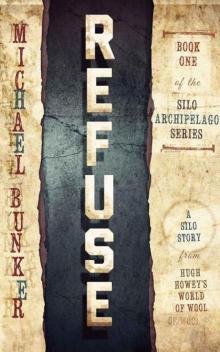 Refuse (The Silo Archipelago Series Book 1)
Refuse (The Silo Archipelago Series Book 1)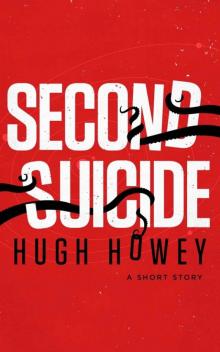 Second Suicide: A Short Story
Second Suicide: A Short Story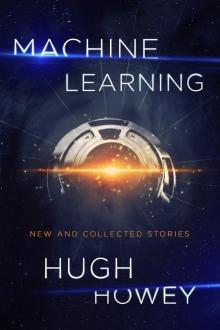 Machine Learning: New and Collected Stories
Machine Learning: New and Collected Stories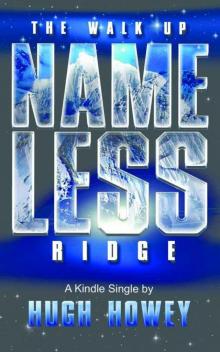 The Walk Up Nameless Ridge
The Walk Up Nameless Ridge Half Way Home
Half Way Home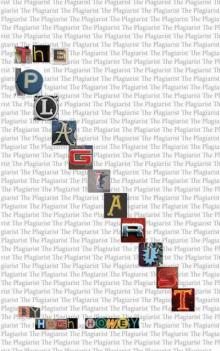 The Plagiarist
The Plagiarist Peace in Amber
Peace in Amber First Shift: Legacy
First Shift: Legacy Wool
Wool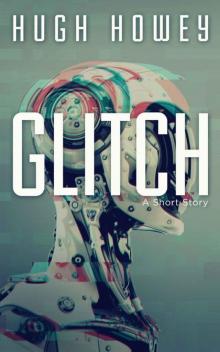 Glitch
Glitch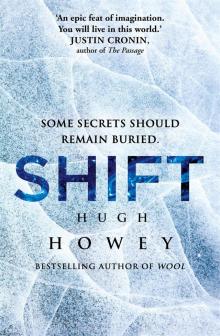 Shift
Shift Dust
Dust Molly Fyde and the Land of Light
Molly Fyde and the Land of Light The Shell Collector
The Shell Collector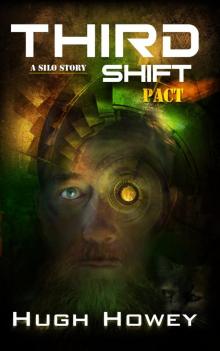 Third Shift: Pact
Third Shift: Pact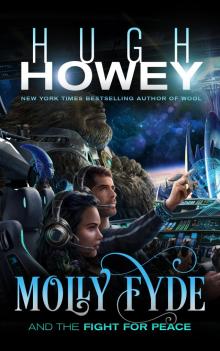 Molly Fyde and the Fight for Peace
Molly Fyde and the Fight for Peace Sand Omnibus
Sand Omnibus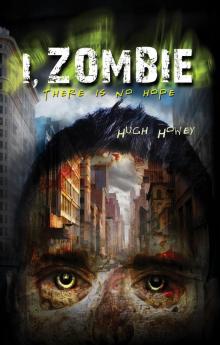 I, Zombie
I, Zombie Second Shift: Order
Second Shift: Order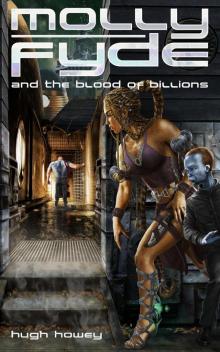 Molly Fyde and the Blood of Billions
Molly Fyde and the Blood of Billions The Hurricane
The Hurricane The Box
The Box Glitch_A Short Story
Glitch_A Short Story Molly Fyde and the Land of Light tbs-2
Molly Fyde and the Land of Light tbs-2 Machine Learning
Machine Learning Resist
Resist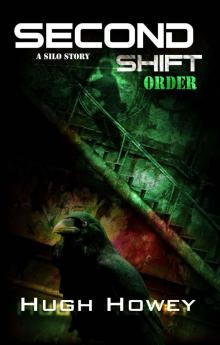 Second Shift - Order (Part 7 of the Silo Series) (Wool)
Second Shift - Order (Part 7 of the Silo Series) (Wool)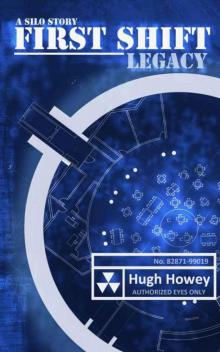 First Shift - Legacy s-1
First Shift - Legacy s-1 Stories on the Go: 101 Very Short Stories by 101 Authors
Stories on the Go: 101 Very Short Stories by 101 Authors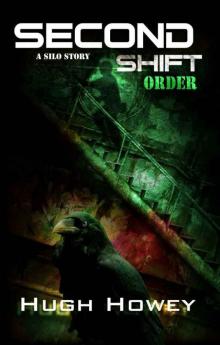 Second Shift - Order s-2
Second Shift - Order s-2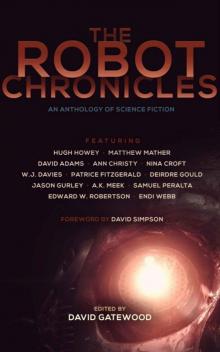 The Robot Chronicles
The Robot Chronicles Molly Fyde and the Blood of Billions tbs-3
Molly Fyde and the Blood of Billions tbs-3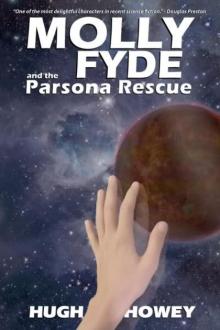 Molly Fyde and the Parsona Rescue tbs-1
Molly Fyde and the Parsona Rescue tbs-1 Molly Fyde and the Fight for Peace tbs-4
Molly Fyde and the Fight for Peace tbs-4 Sand
Sand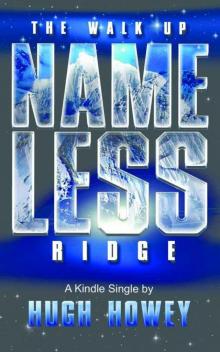 The Walk Up Nameless Ridge (Kindle Single)
The Walk Up Nameless Ridge (Kindle Single) Wool Omnibus Edition (Wool 1 - 5)
Wool Omnibus Edition (Wool 1 - 5) The World of Kurt Vonnegut: Peace in Amber
The World of Kurt Vonnegut: Peace in Amber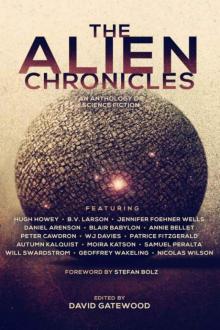 The Alien Chronicles
The Alien Chronicles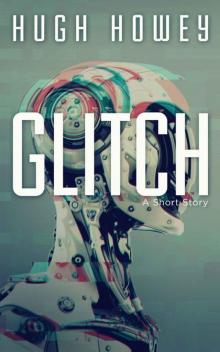 Glitch: A Short Story (Kindle Single)
Glitch: A Short Story (Kindle Single)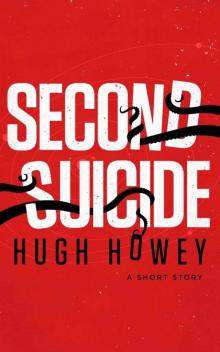 Second Suicide: A Short Story (Kindle Single)
Second Suicide: A Short Story (Kindle Single)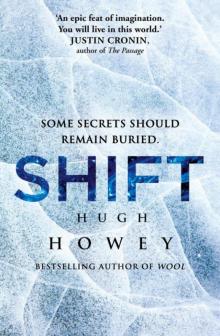 Shift (silo)
Shift (silo)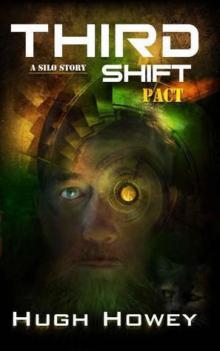 Third Shift - Pact
Third Shift - Pact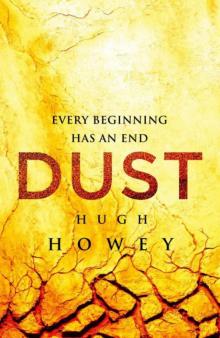 Dust s-9
Dust s-9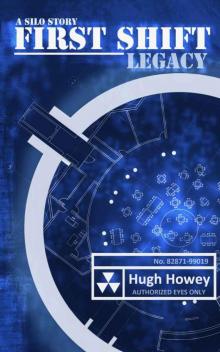 First Shift - Legacy (Part 6 of the Silo Series) (Wool)
First Shift - Legacy (Part 6 of the Silo Series) (Wool)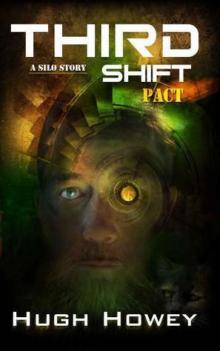 Third Shift - Pact s-3
Third Shift - Pact s-3 Sand: Omnibus Edition
Sand: Omnibus Edition The Box: A Short Story
The Box: A Short Story